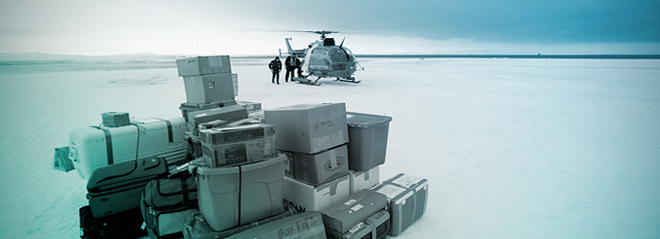|
|

|
|

|
|

|
|
Task 3 - Biogeochemical cycle of metals in permafrost thaw lakes: inventory of phases, species & reactions
Task 3d - Partner in charge: Oleg Pokrovsky (GET-Toulouse, partner 3)
Impact of metals on the ecosystem and biodiversity: data synthesis and box/chemodynamic
models - (O. Pokrovsky; J. Viers; S. Audry; C. Cloquet; C. France-Lanord; D. Amouroux; M. Bueno; E.
Tessier; W. Vincent; R. Pienitz; I. Laurion)
This sub-task aims to integrate data and their interpretation from sub-tasks 3abc to propose regional and
more global chemodynamic models integrating sources-transport/mobility/reactivity-storage of metals in
these aquatic systems. Life cycles, including drainage, of these permafrost thaw lakes will be taken into
account. We will be estimating the percentage of influx metals that interact with organic matter, that is
made bio-available and that bio-accumulate in vegetation. We will relate these estimates to the type of
vegetation and available particulate/dissolved organic matter (using C and S isotopes) and bio-diversity in
space and time. We will highlight any differences in the behavior of geogenic and anthropogenic metals in
the systems by using speciation and isotope data.
Risks: Limit conditions of the models will not be highly constrained if we do not measure enough
contrasts in speciation and isotopic compositions between reservoirs. Note, however, that bio-interactions
and bio-accumulation of metals (Zn, Cu) and other elements (Mg, Ca) are reactions that usually leads to
the highest isotope fractionations measured for these elements (e.g. Viers et al. 2007; Weiss et al. 2005;
Cloquet et al. 2008).





